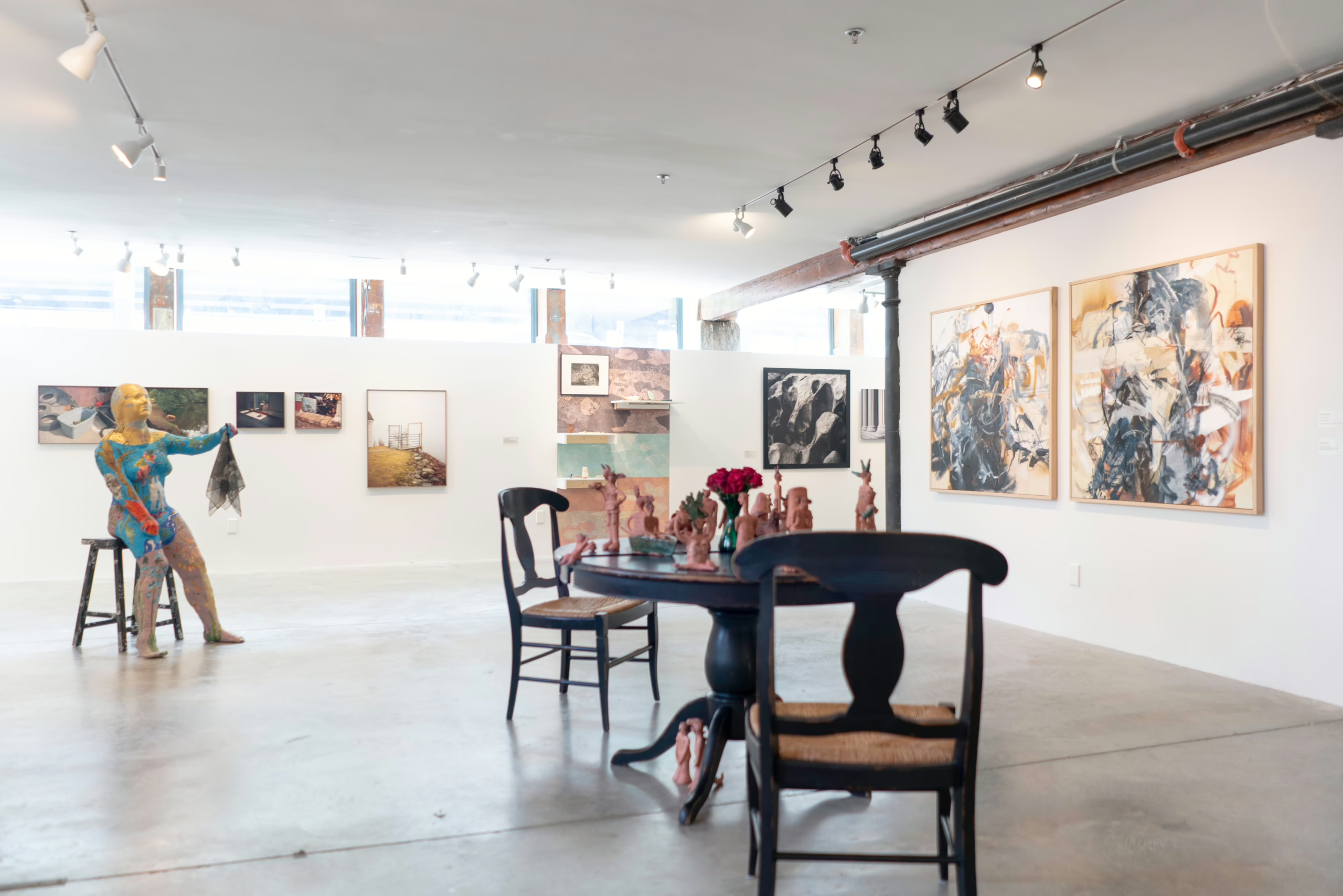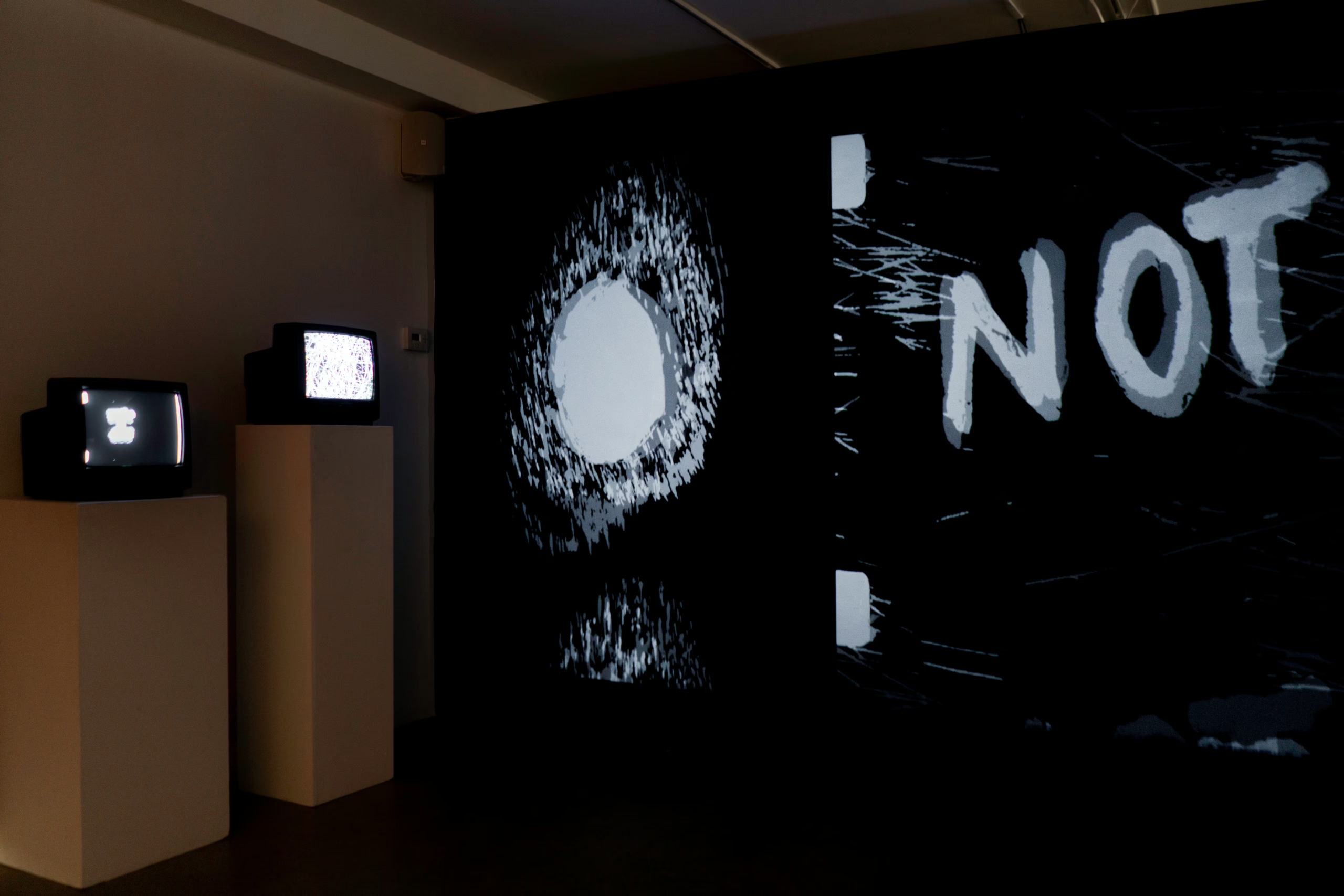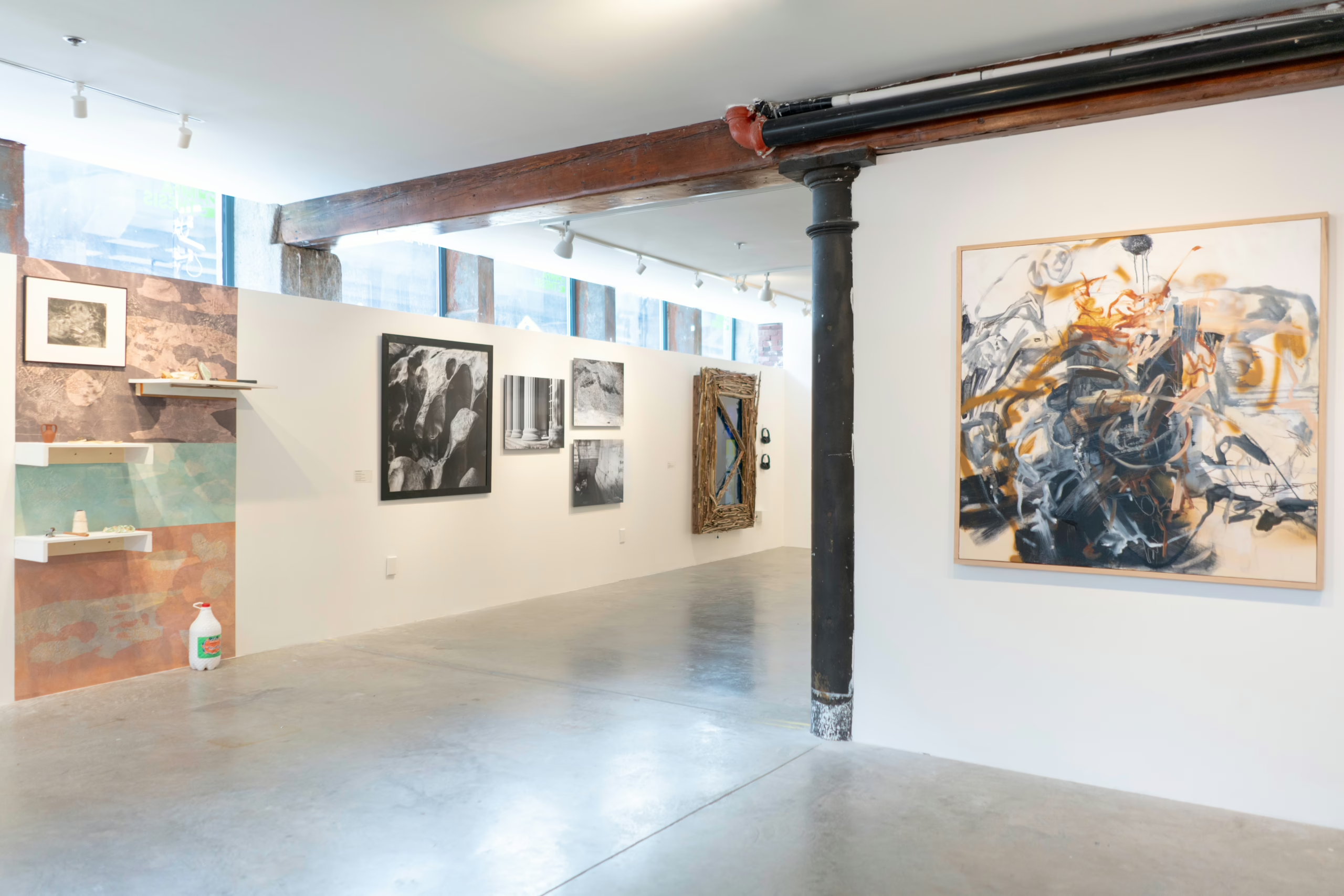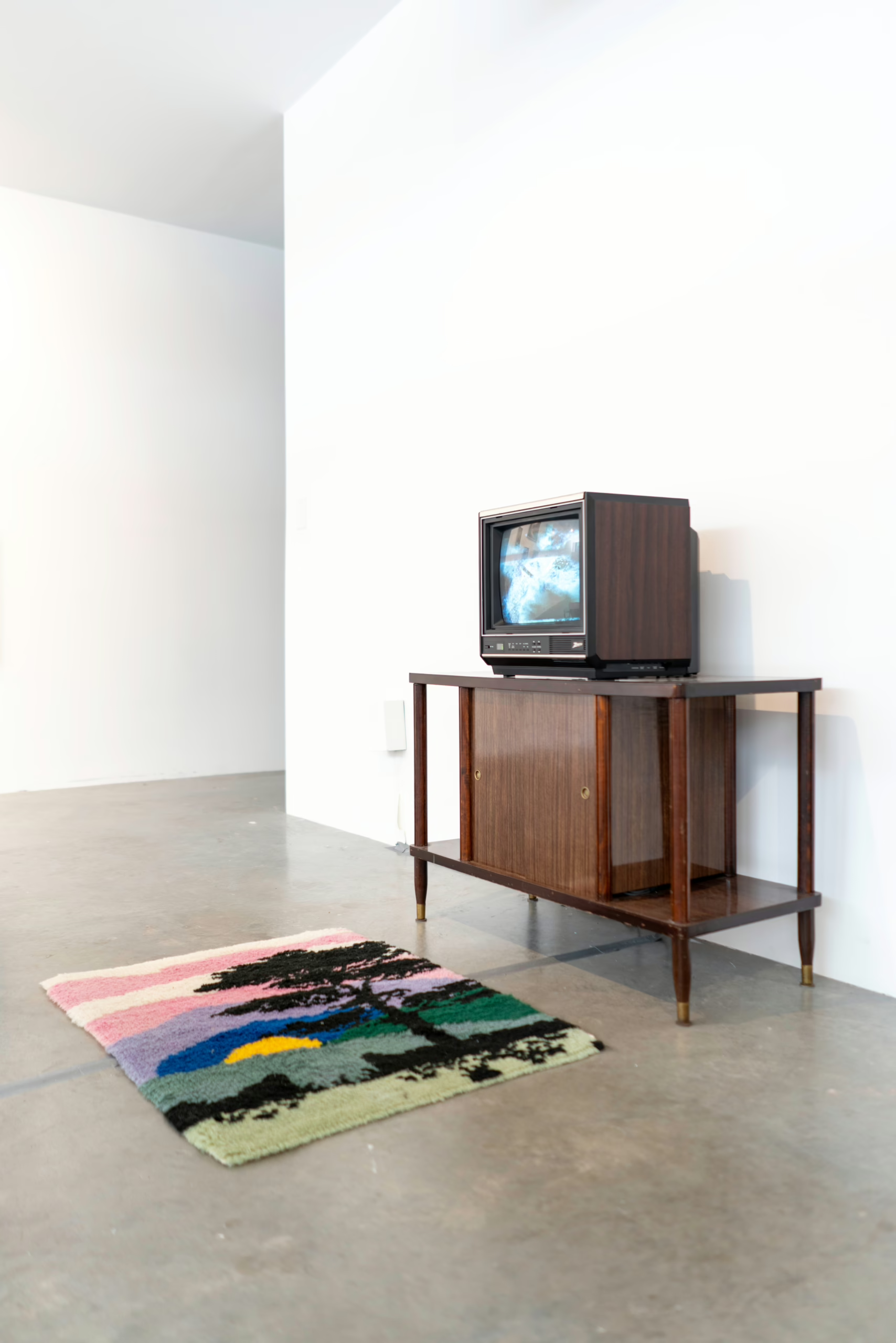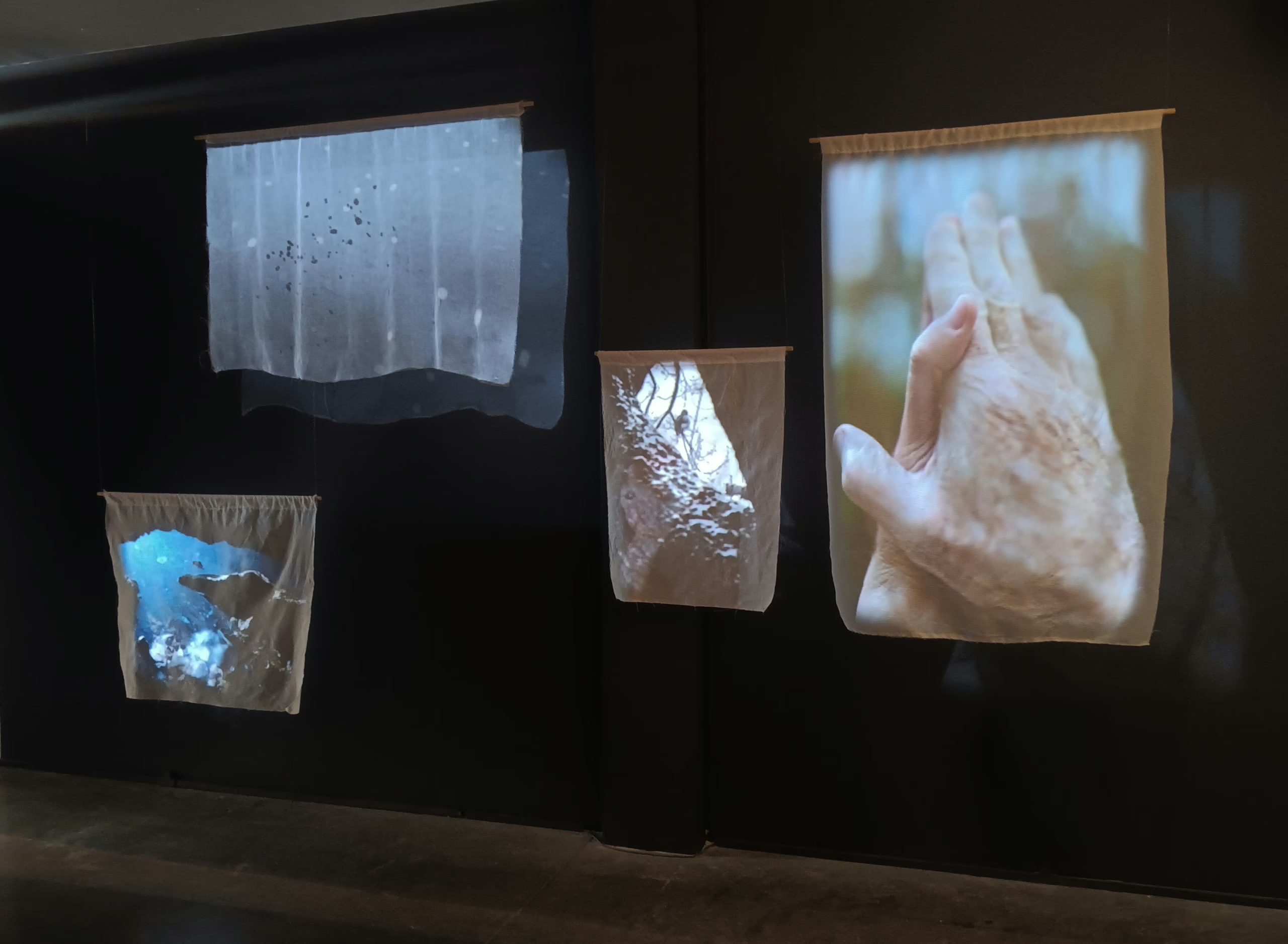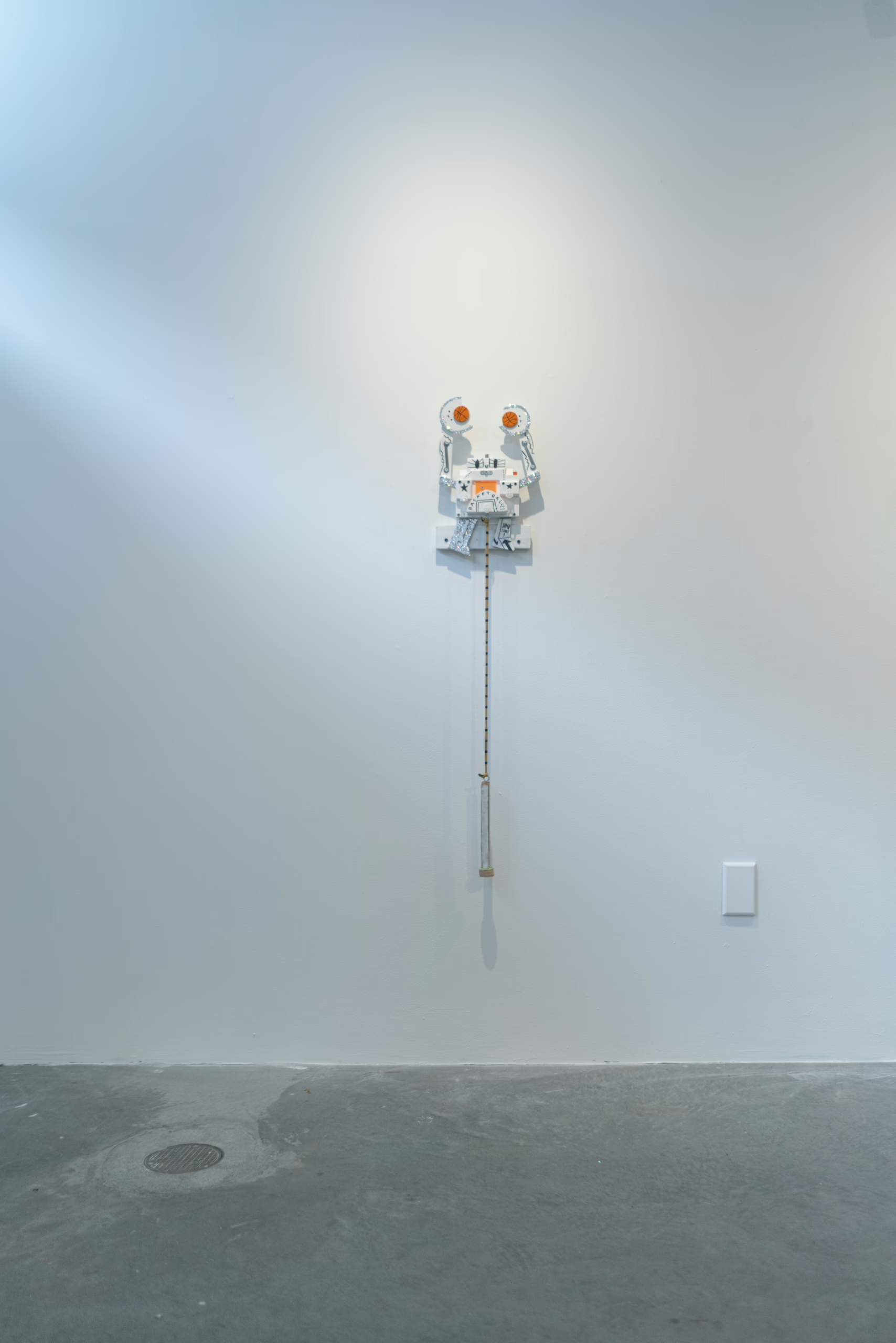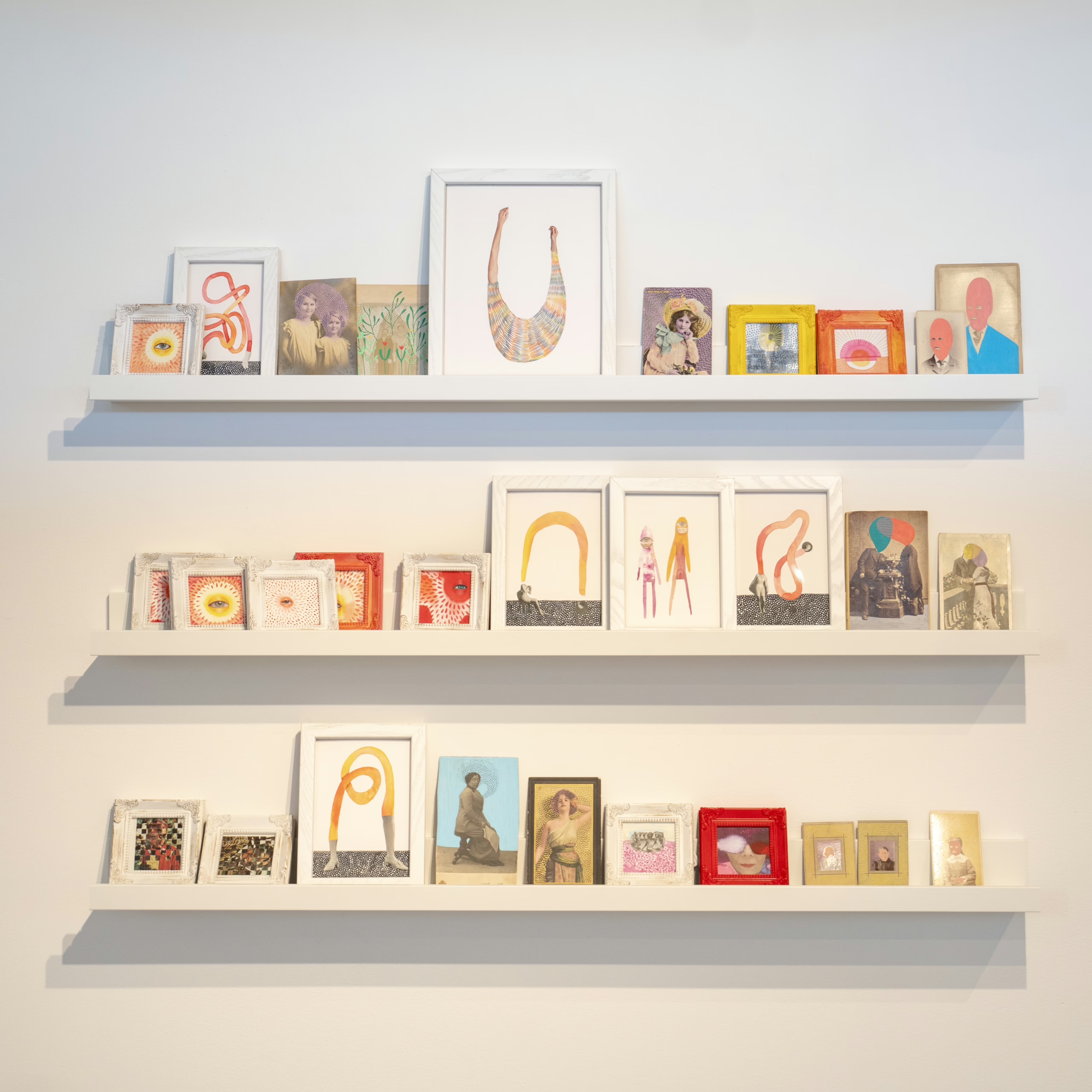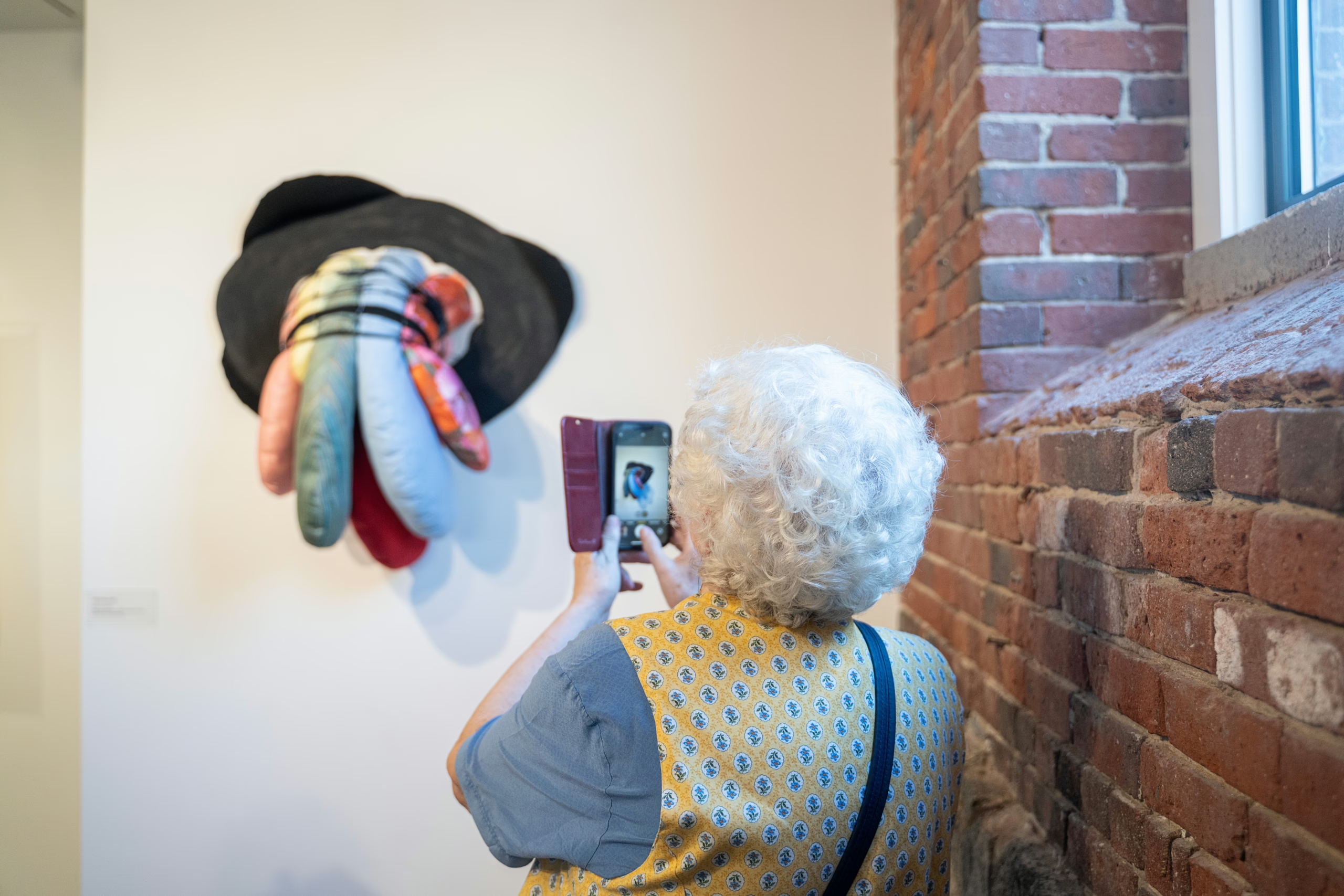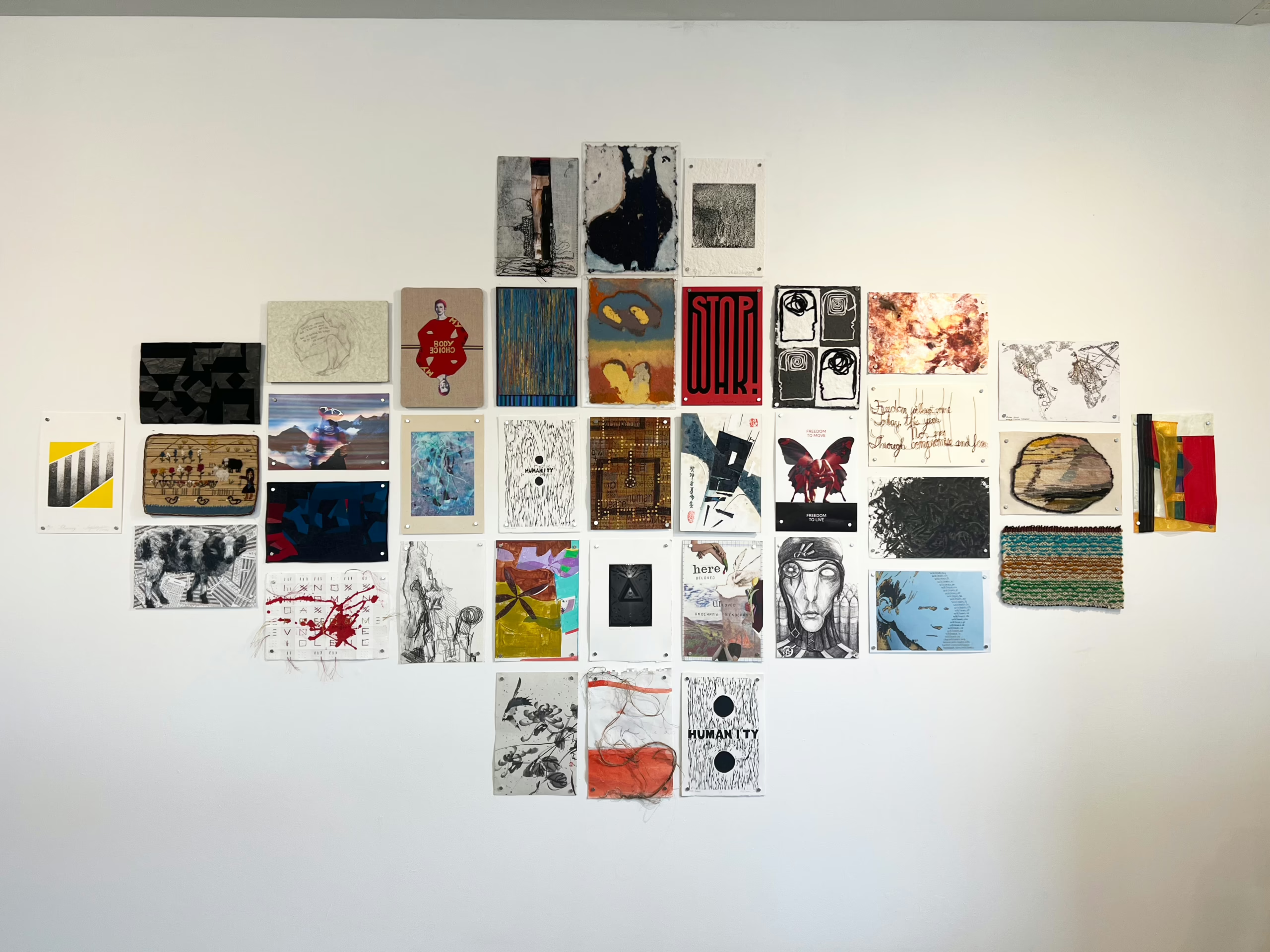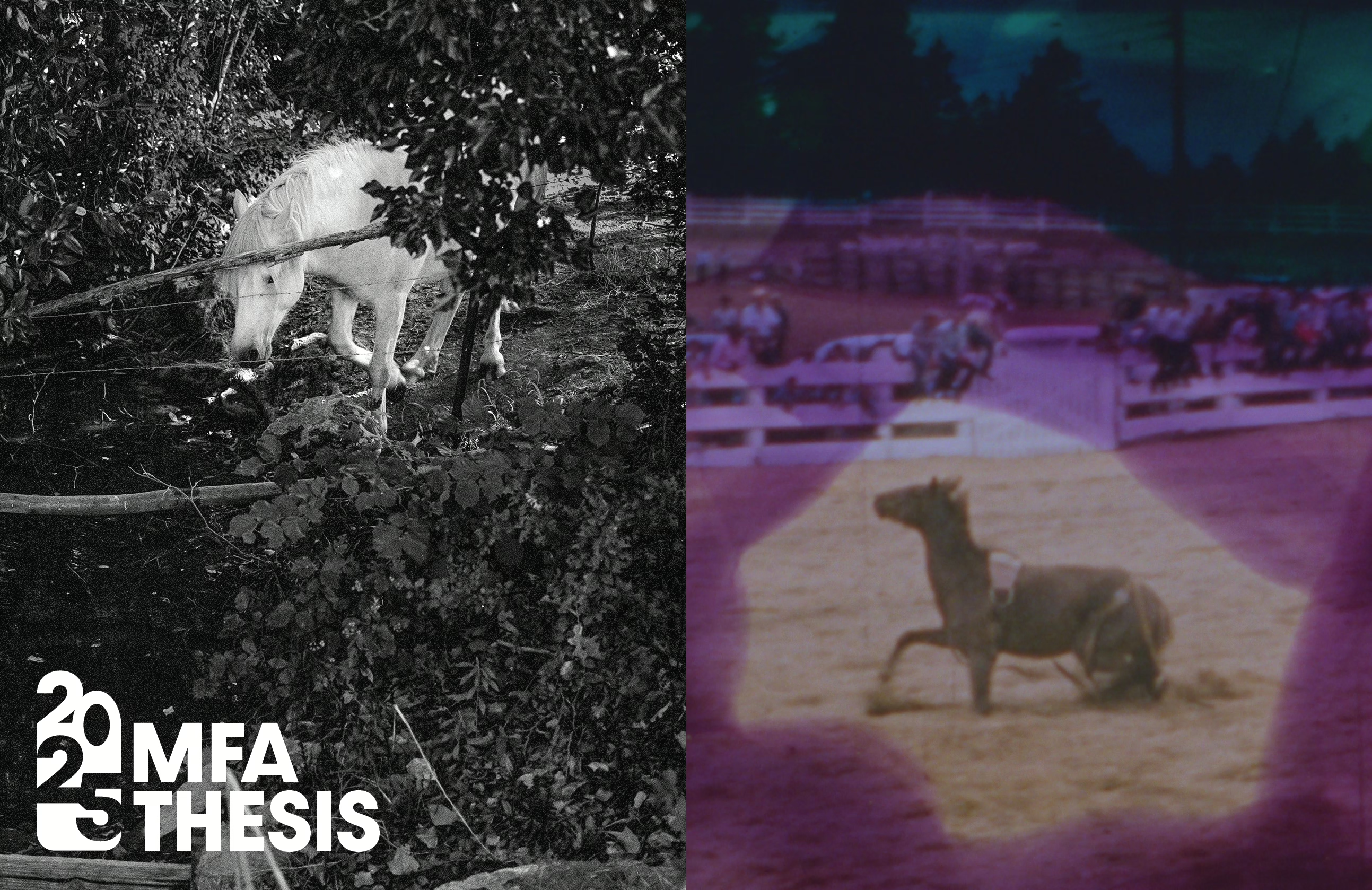
2025 SPRING MFA THESIS EXHIBITION
Apr 19 – May 25, 2025
Working in diverse media, the artists of the 2025 Spring Thesis Exhibition are unified by a drive to document, recollect, and preserve. Several themes emerge, from memorializing trauma and grief to recording the effects of broader social and institutional forces. Throughout the exhibition, the artists investigate identity, its formation, expression, and destruction.
Aghigh Afkhami’s haunting photographs bridge her current life in the United States and her childhood spent in Iran. Afkhami captures imagery that sparks her increasingly hazy recollections of Iran, drawing connections between her disparate homes while examining the experience of displacement.
Stella Bastart’s frenetic films illuminate the contradictory ways we experience trauma. By scratching onto 16mm film, Bastart creates her imagery through a destructive process, producing entrancing films that employ humor and wordplay to explore the boundaries of joy, despair, violence, and care.
Rashid Bilimoria photographs sites of excavation, showing the transformation of natural stone into architectural structures. Bilimoria’s stark images emphasize the formal qualities of stone, interrogating the physical materials that connote institutional power through imposing facades.
Jacob Church reveals the tension within working-class towns between community and disenfranchisement and his place within that context. Church builds a visual lexicon of contemporary Americana, documenting moments of exchange between natural and built environments.
Presented on a retro CRT television, Lauren Marie Dake’s hallucinatory film-collage draws upon nostalgia to invoke a sense of the uncanny. By physically modifying found film from the 1960s, Dake creates moments of pleasure and discomfort, challenging our own self narratives.
Emily Gleason reifies a lifetime of memories and dreams through clay figurines. Working primarily with unglazed terracotta, Gleason’s unassuming sculptures belie a childhood impacted by mental illness and addiction. Arranging her sculptures around a household table, Gleason invites the viewer into her process of preserving memory.
Elizabeth Hopkins conveys mourning through her photographs documenting the end of her father’s life. Capturing fleeting moments of beauty in a period of immense sadness, Hopkins perpetuates memories of her father. Hopkins projects her photographs onto diaphanous fabric, evoking the transience of memory and grief.
Josh Lind’s paintings of knotted and overlaid bandanas visualize his experience of polyamorous relationships. Drawing upon the hanky code, a form of subversive communication in the gay male community, Lind plays with opacity and layering to represent the complexities of his relationships.
Diane Machado’s immersive installation accumulates prints and objects, replicating the construction of her identity as a first-generation Azorean-Portuguese American. Machado combines archival research, abstracted landscapes, and artefacts to scrutinize the experience of diaspora.
Compelled by obsessive documentation of her own body, Bridey McGlynn’s paintings push representations of the human form to the point of obliteration. Emphasizing the formal qualities of paint and mark-making, this abstraction allows McGlynn to deliver a self-depiction which embraces multiplicity over fixed identity.
Behnaz Monzavi draws upon the history of Persian miniature art to critique the state of women’s rights in Iran. Monzavi paints intricate scenes over body cast sculptures, situating the fight for equality in the female body. Conveying solidarity from afar, Monzavi utilizes birds in her printmaking as symbols of resistance.
Mustafa Yildiz documents the lives of children living at an orphanage in Somalia. Bearing witness to their struggles, Yildiz questions the broader social forces that produced their devastating displacement. Yildiz’s sculptural installation evokes their makeshift shelters, drawing the viewer into the circumstances of the children.
Andrew Zou’s photographic self-portraiture chronicles his process of uncovering his identity as a gay man in Boston. Putting himself in situations to explore his sexuality, self-expression, and being perceived fetishistically as a Chinese man, Zou accumulates experiences and imagery that compose his new self-conception.
-Caitee Hoglund, 13FOREST Gallery Director


